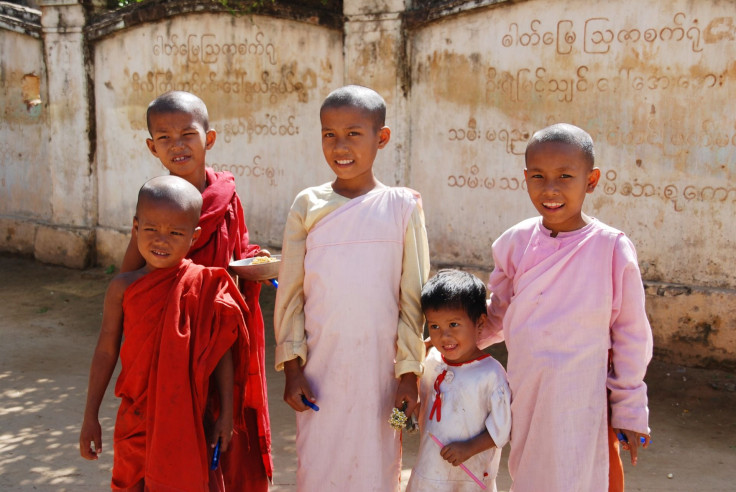Global Warming May Impact Children's Health, Affecting Everything From Their Infection Risk To Food Supply

Climate change can often feel like an abstract idea, something that is happening in the background but is rarely linked to our daily activities. A new statement from the American Academy of Pediatrics (AAP) aims to change that, and remind us all that climate change is real, imminent, and dangerous. The AAP urges doctors and policymakers to work together to end the crisis and prevent its negative impact on children’s health.
“Worsening heat waves and severe weather events, changing allergy seasons and shifting infectious disease patterns affect many children directly,” Dr. Samantha Ahdoot writes in the AAP release. “It can be hard to make sense of it all, let alone know what to do about it. Because of their growing minds and bodies, children are uniquely vulnerable to changes in their environment. A changing climate has a wide range of effects on the plants, animals and natural systems on which children depend for their own health, safety and security.”
First, let’s briefly discuss what climate change is. While there’s a whole lot of debate surrounding the topic, the U.S. Environmental Protection Agency (EPA) and many other organizations, researchers, and politicians agree that it exists. The EPA notes that over the past 100 years, the Earth’s temperature has risen by 1.5 degrees Fahrenheit. That’s expected to increase by another 0.5 to 8.6 degrees Fahrenheit within the next 100 years — all thanks to human endeavors like deforestation, production of carbon dioxide and other greenhouse gases, industrial processes, and burning fossil fuels. While temperature rising one degree doesn’t seem like much, “small changes in the average temperature of the planet can translate to large and potentially dangerous shifts in climate and weather,” the EPA states.
In their statement, the AAP notes several factors of climate change that can impact children’s health, from heat-related illness to air quality. Hotter temperatures causes the concentration of ozone (smog) in the air to rise, and this can increase asthma attacks and lung problems. Climate change also causes more wildfires, which emit toxic smoke into the air. Not to mention air pollution, which has been linked to cancer, heart disease, and lowered longevity.
Climate change can influence the patterns of infectious diseases that travel around the world — such as West Nile virus or Lyme disease. It also has an impact on agricultural output and thus a child’s food security.
Then there’s asthma. According to the CDC, the number of patients who have been diagnosed with asthma rose by 4.3 million from 2001 and 2009, possibly due to global warming. Asthma can affect a kid’s class attendance or school work. Scientists believe that air pollution, allergies, and climate change all play a role in exacerbating asthma symptoms.
“Every child needs a safe and healthy environment and climate change is a rising public health threat to all children in this country and around the world,” AAP President Dr. Sandra Hassink said in the press release. “Pediatricians have a unique and powerful voice in this conversation due to their knowledge of child health and disease and their role in ensuring the health of current and future children.”
The statement also notes that based on an overview of the scientific evidence, children in poor, third-world countries are most vulnerable to the effects of climate change, such as post-traumatic stress disorder (PTSD) from climate-related disasters, heat-related mortality, and infectious diseases.
“Children are uniquely at risk to the direct impacts of climate changes like climate-related disaster — including floods and storms — where they are exposed to increased risk of injury, death, loss of or separation from caregivers and mental health consequences,” Ahdoot said in the press release.
Aside from urging policymakers to make a difference, we can choose a more environmentally-friendly lifestyle — which can impact our health, and others’ health, down the road. Choosing to bike or walk to work, for example, can help reduce air pollution in the atmosphere. Try to re-use and recycle items instead of throwing them away. And the AAP points out that parents can join environmental groups like Mom’s Clean Air Force to make a difference.
Recently, President Barack Obama made a direct link between climate change and health problems during a speech, noting that people who suffered from respiratory illnesses would see an improvement in their health if we reduced carbon emissions and air pollution.
“For the sake of our kids, we’ve got to do more to reduce it,” he said.
Source: American Academy of Pediatrics. Global Climate Change and Children’s Health. Pediatrics, 2015.



























